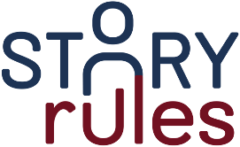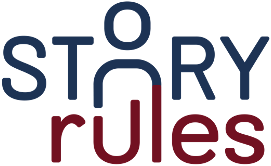Managing Emotional Triggers
“We have sent this to press.”
It was with a huge sense of relief, nervousness, excitement and achievement that I read these words from my publisher on Friday, the 25th of July.
Finally, the nth version of the book has been finalised and is going to print—and I dare not look at it one more time for fear of finding stuff to modify.
At one point, I think the editors might have been tempted to just stop sharing the latest version with me, thinking, “You’ve had enough. No more edits for you”.
And now, I am slowly but surely transitioning from the production to the marketing phase of this project. There are some major YouTube plans and outreach to corporate and other institutional clients for bulk orders.
If you are interested, please reach out, and I am happy to share the details!
Thanks for reading The Story Rules Newsletter! Subscribe for free to receive new posts and support my work.
And now, on to the newsletter.
Welcome to the one hundred and twenty-sixth edition of ‘3-2-1 by Story Rules‘.
A newsletter recommending good examples of storytelling across:
- 3 tweets
- 2 articles, and
- 1 long-form content piece
Let’s dive in.
𝕏 3 Tweets of the week
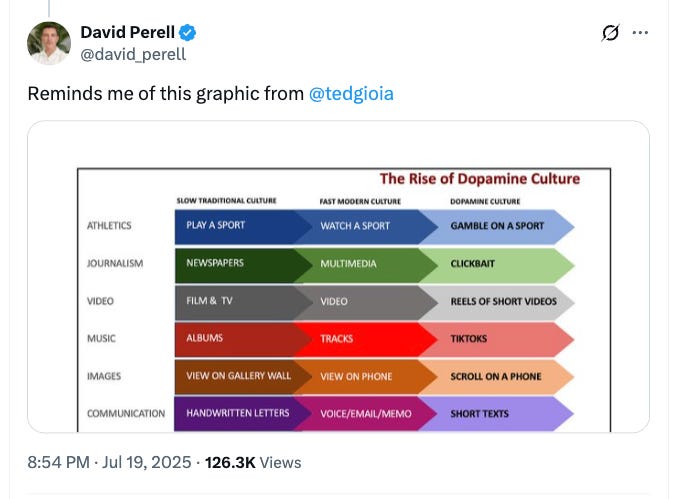
Insightful connection across activities—how instant gratification is now woven into all elements of our culture.

Interesting map. Didn’t know about Jharkhand and even northern West Bengal!
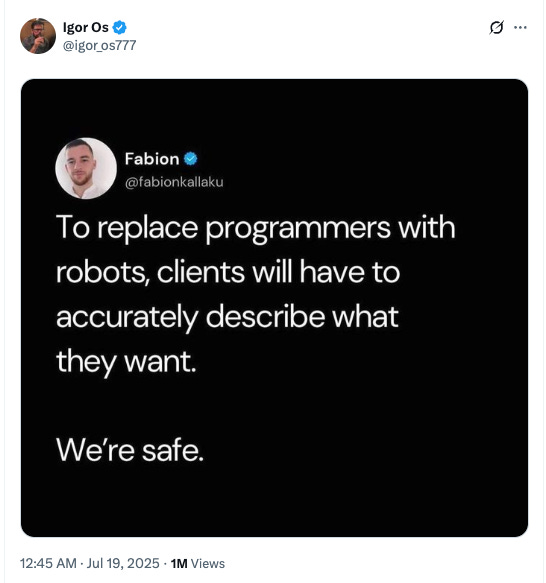
Haha, that’s true. Clarity of thought and taste are not easily found!
📄 2 Articles of the week
a. ‘Writing is thinking’ Nature Reviews Bioengineering
This short article from an academic journal is one more salvo in the argument made by writers against outsourcing all writing to AI.
The authors make a strong case for why writing is a critical part of thinking:
Writing compels us to think — not in the chaotic, non-linear way our minds typically wander, but in a structured, intentional manner. By writing it down, we can sort years of research, data and analysis into an actual story, thereby identifying our main message and the influence of our work.
Handwriting is powerful – my favourite way of writing:
For example, handwriting can lead to widespread brain connectivity and has positive effects on learning and memory.
Also, it’s perhaps more time-consuming to edit an LLM-generated text:
It might be more difficult and time-consuming to edit an LLM-generated text than to write an article or peer-review report from scratch, partly because one needs to understand the reasoning to be able to edit it.
LLMs do have their utility, once the first draft is generated:
LLMs can aid in improving readability and grammar, which might be particularly useful to those for which English is not their first language. LLMs might also be valuable for searching and summarizing diverse scientific literature6, and they can provide bullet points and assist in the brainstorming of ideas. In addition, LLMs can be beneficial in overcoming writer’s block, provide alternative explanations for findings or identify connections between seemingly unrelated subjects, thereby sparking new ideas.
Writing is thinking—do not outsource it:
Outsourcing the entire writing process to LLMs may deprive us of the opportunity to reflect on our field and engage in the creative, essential task of shaping research findings into a compelling narrative — a skill that is certainly important beyond scholarly writing and publishing.
b. ‘Setting the Record Straight: No, Burger Singh has not raised Rs. 47 Cr (Yet)’
This hilarious press release was written by the QSR group Burger Singh, and sets a new benchmark in terms of creative, authentic, and funny writing, especially for the dull, drab world of corporate press releases.
They just went nuts with the analogies (maybe used ChatGPT to generate them, and decided to use ALL of the suggestions?):
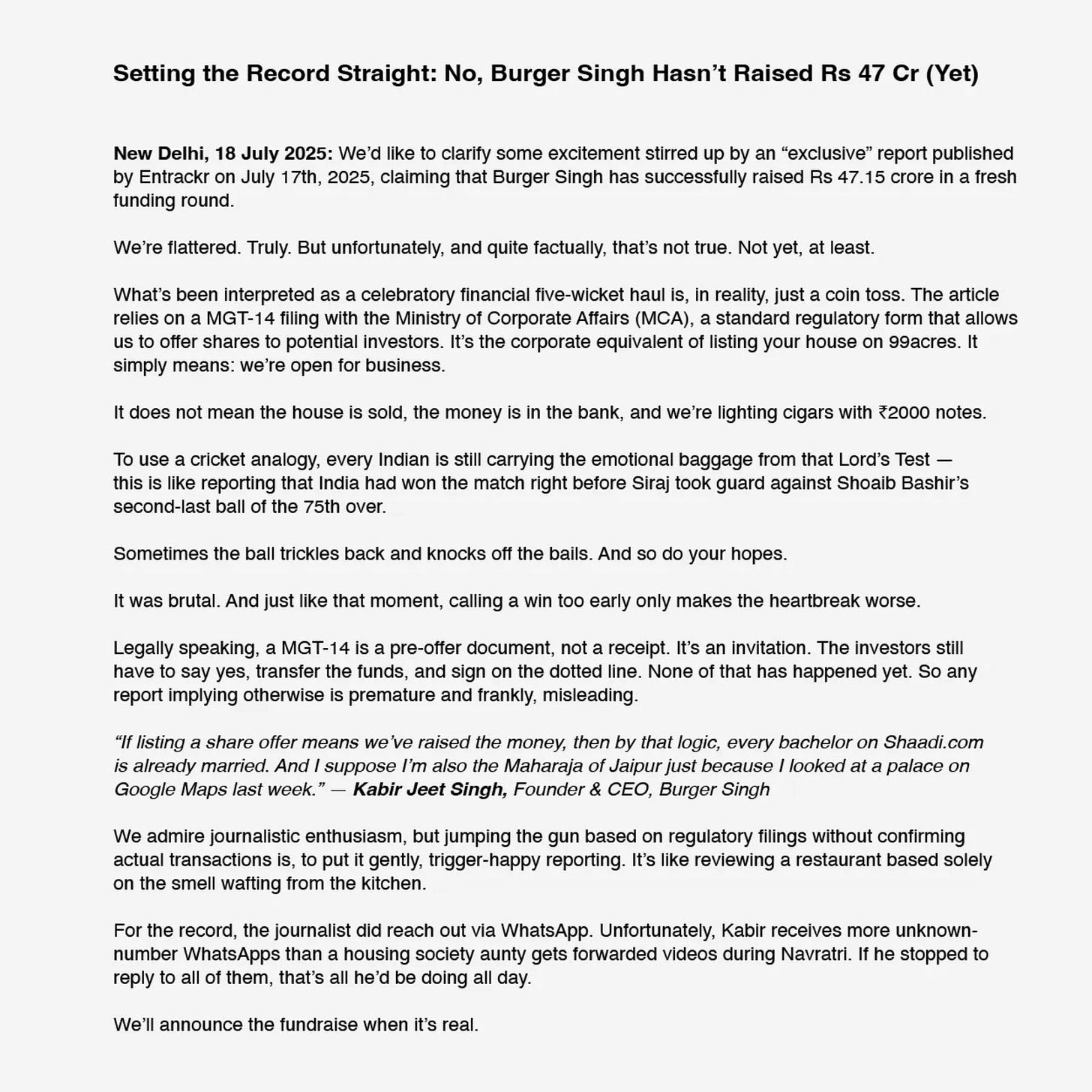
The piece uses topical humour (India’s recent test loss at Lord’s), hilarious analogies (Shaadi.com) and managed to put in a restaurant analogy there too.
Well done and looking forward to more such examples from other companies too.
🎧 1 long-form listen of the week
a. ‘How to Harness Your Feelings’ on the Hidden Brain podcast
This important conversation with psychologist and neuroscientist, Ethan Kross, talks about what techniques we can use to regulate our emotions better (especially when we are triggered).
I liked this frame of emotions being unwieldy tools, and needing the right regulation mechanisms if they are either over- or under-triggered:
Shankar Vedantam: So, Ethan, emotions are supposed to be really valuable to us. They’re supposed to provide us with useful signals about how to act in the world. So why do they sometimes cause us to say and do things that we will come to regret?
Ethan Kross: Because they’re what I call unwieldy tools. All of the emotions we experience, when we experience them in the right proportions, are useful. Anger, when experienced not too intensely or not too long, can be valuable. The problem that we all struggle with, and this is what I call an ancient problem, this has been something that we’ve been struggling with for likely as long as we’ve been roaming the planet in our present form, is that often these emotions are triggered, and they’re not triggered in the right proportions. They are triggered either too intensely or not intensely enough, or they last too long or not long enough. And what I find so fascinating about us, about human beings, is guess what we also evolved tools to rein those emotional responses in, so that if and when we are triggered, we can very quickly rein those emotional responses in to help us reach whatever emotion regulatory goals we have.
Kross shares a technique called ‘distanced self-talk’ as a useful regulation mechanism:
…distanced self-talk involves coaching yourself through a problem, typically silently, using your name or … to give yourself instruction. You’re essentially talking to yourself in your head like you would give advice to someone else. One of the things we know about people is that it is often much easier for us to give advice to others than it is to take our own advice. There’s the famous saying, Do as I say, not as I do.
He shares the example of Novak Djokovic using this:
So it was early in the Wimbledon tournament and he’s (Djokovic’s) playing a much, much lower ranked opponent and he’s getting creamed in the match. He’s really doing poorly. And he takes a break in the middle and he goes to the bathroom. And then when he comes out of the bathroom, he’s like a different player. He proceeds to dominate the rest of the match and ultimately win. After the match is over, a journalist asks him, what happened in the bathroom?
And he says he went to the bathroom and he gave himself a pep talk. Listen to what he says as a direct quote, what he said to himself in the locker room. “You can do it. Believe in yourself. Now is the time. Forget everything that has happened. New match starts now. Let’s go, champ.” That’s the kind of advice you would give to another person.
Another technique that works is ‘expressive writing’:
…‘expressive writing’ involves sitting down and writing about your deepest thoughts and feelings about an experience you’re struggling with. For 15 to 20 minutes a day, for anywhere between one to three consecutive days. And the research on this tool is pretty compelling. It shows that when you ask people to engage in this form of emotion regulation, when you ask people to use this tool, it helps them feel better about their experiences. Over time, you find that they’re less distressed about the experience. They’re healthier. They visit the doctors less over the next few months. The thinking here is, when you sit down to write about an experience, you have to write about someone who that experience is happening to. So essentially, you’re thrust into this narrator role, and you become a character in the story that you’re writing about. And in a set of studies, we find that that has a distancing function, which predicts some of the benefits linked with this tool.
Just like we have different sets of exercises for physicial fitness, we need different techniques for managing our emotional well-being:
What we know is that when you look at how people manage their emotions in their daily lives, they don’t restrict themselves to just one tool. On average, we find that people use between three and four strategies each day to manage that experience. And so, we know that people are using multiple tools, and we also know that different combinations of tools are working for different people. It’s not just one combination. We don’t yet know why certain tools hang together for certain people. The metaphor I like to use here to make sense of this, which really resonates strongly with me, is to look to physical fitness and exercise. When you go to the gym, number one, you don’t do one exercise. If you’re weight training, for example, I haven’t met anyone who only curls biceps as the only thing they do in the gym, right? You do a few different things, and you actually, you switch up the exercises every single day to meet different kinds of physical demands that you have
That’s all from this week’s edition.
Photo by Diana Polekhina on Unsplash
